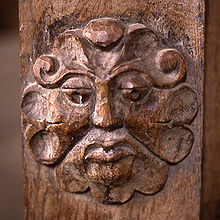 The inspiring expression “Si, se puede!” is reminiscent of this Matthew 19:26 quote: …with
God all things are possible. Although God isn’t directly mentioned in the first expression (which loosely translates as “Yes, it can be done!” – or even more loosely as “Yes, we can!”),
The inspiring expression “Si, se puede!” is reminiscent of this Matthew 19:26 quote: …with
God all things are possible. Although God isn’t directly mentioned in the first expression (which loosely translates as “Yes, it can be done!” – or even more loosely as “Yes, we can!”),
Cesar Chavez’ use of it certainly stemmed from his deep faith in God’s compassion.
Born into a Mexican-American family with many children, Chavez grew up in a small adobe home in Yuma, Arizona. His family lost their possessions in the Great Depression, and went on to struggle as migrant farm laborers in
California. Even as a teenager, Chavez would assist other workers by driving them to hospitals when needed. He dropped out of school after eighth grade in order to insure that his mother wouldn’t have to work in the fields. Chavez then became a
full-time migrant farm worker. Except for a two-year stint in the Navy, Chavez continued such backbreaking labor for the next ten
years.
PBS.org reports that Chavez learned the value of hard work from his father, who also “opened his eyes to the inequities of the farm labor system.”
His mother was “a deeply religious and compassionate woman” who “emphasized the importance of caring for the less fortunate, and the power of love.” Chavez was also greatly influenced by Father Donald McDonnell, a San Jose priest “who introduced him to the writings of St.
Francis and Mahatma Gandhi, and the idea that non-violence could be an active force for positive change.” He was also mentored by community-organizer Fred Ross, who hired and trained Chavez to work in the Community Service
Organization.
Chavez went on to spiritually develop as an extraordinary
leader. Wikipedia reports that he cofounded the National
Farm Workers Association (along with Dolores Huerta), which later became the United Farm Workers (UFW). According to PBS.org, the UFW went way beyond typical “bread and butter” union
issues with its vision of “reclaiming dignity” for those
marginalized by society. In 1968, Chavez began fasting – not only for social change, but also as an expression of his own religious beliefs. He was a devout Catholic whose vision for the UFW foreshadowed liberation theology.
Resources
http://en.wikipedia.org/wiki/C%C3%A9sar_Ch%C3%A1vez
http://www.pbs.org/itvs/fightfields/cesarchavez.html
http://paceebene.org/cesar-chavez-prophet-nonviolence
http://spanish.about.com/b/2006/04/11/does-s-se-puede-mean-yes-we-can.htm








_002.jpg)










_svg.png)